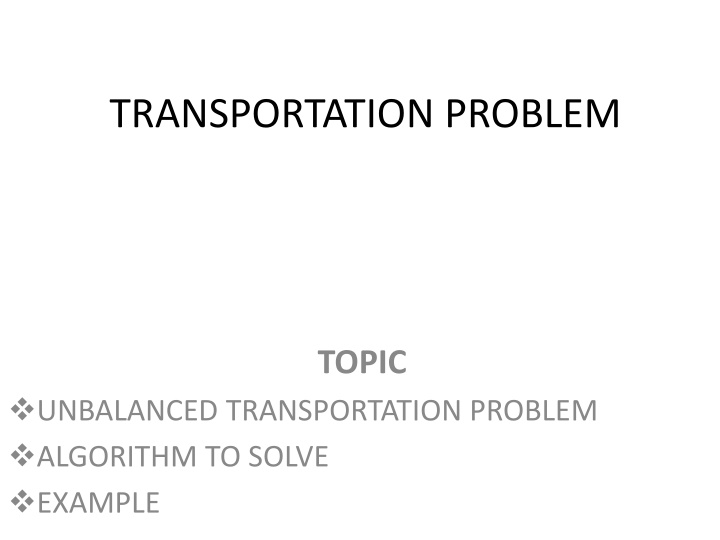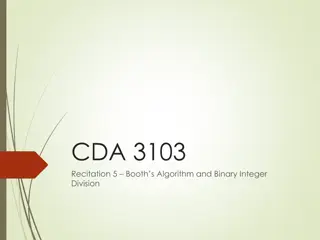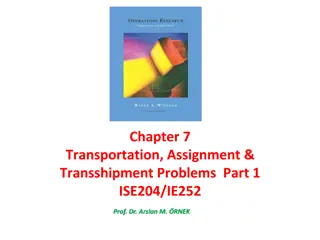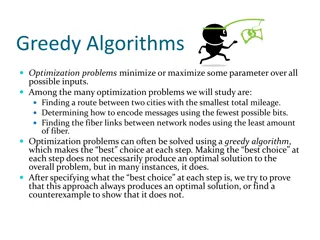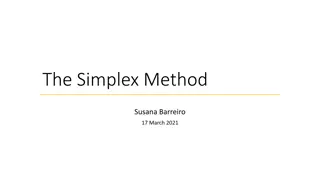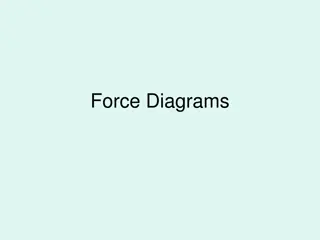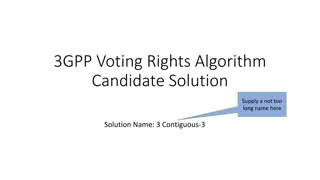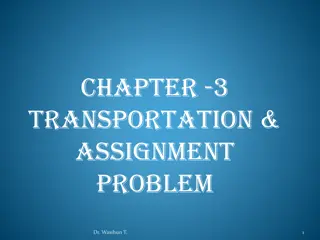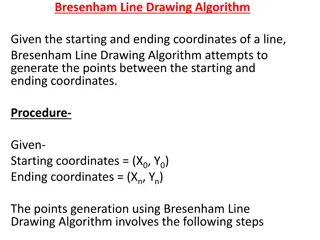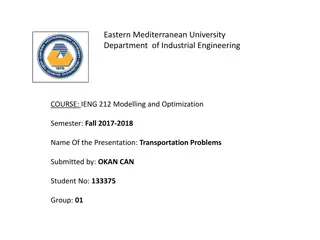Solving Unbalanced Transportation Problems with an Algorithm Example
In a transportation problem where supply doesn't equal demand, creating dummy rows or columns can balance the system for solving it successfully. This method involves allocating surplus or unsatisfied values with zero transportation cost. Explore an example of solving such unbalanced transportation problems using the Vogel's approximation method step by step.
Download Presentation

Please find below an Image/Link to download the presentation.
The content on the website is provided AS IS for your information and personal use only. It may not be sold, licensed, or shared on other websites without obtaining consent from the author.If you encounter any issues during the download, it is possible that the publisher has removed the file from their server.
You are allowed to download the files provided on this website for personal or commercial use, subject to the condition that they are used lawfully. All files are the property of their respective owners.
The content on the website is provided AS IS for your information and personal use only. It may not be sold, licensed, or shared on other websites without obtaining consent from the author.
E N D
Presentation Transcript
TRANSPORTATION PROBLEM TOPIC UNBALANCED TRANSPORTATION PROBLEM ALGORITHM TO SOLVE EXAMPLE
UNBALANCED TRANSPORTATION PROBLEM So far we have assumed that the total supply at the origins is equal to the total requirement at the destinations. But in certain situations, the total supply is not equal to the total demand. Thus, the transportation problem with unequal supply and demand is said to be unbalanced transportation problem.
If the total supply is more than the total demand, we introduce an additional column, which will indicate the surplus supply with transportation cost zero. Similarly, if the total demand is more than the total supply, an additional row is introduced in the table, which represents unsatisfied transportation cost zero. demand with
Algorithm to solve To solve this problem, we have to introduce an additional row or column question) which is known as Dummy Row or Dummy column. Now the access Demand or Supply will allocate to that dummy row or column . Now our problem is balanced after that we can solve the question using any of method as we do in normal (balanced) transportation problem question. (according to
Example Solve the following transportation problem using vogel s approximation method. D1 D2 D3 ai O1 O2 bj 250 250 500 500 28 17 26 19 12 16 300
As we see in the following question, ai=500+300=800 and bj=250+250+500=1000 Hence it is the case of unbalanced transportation problem . So we introduce an additional row or Dummy row and allocate 200 to dummy row to balanced them. Step-1 D1 D2 O1 28 17 D3 ai 500 26 O2 O3 bj 250 300 19 12 16 0 0 0 250 500 200
Step-2 D1 D2 D3 aj P O1 28 17 500 9 26 O2 19 300 4 12 16 O3 200 0 0 200 0 0 bj P 19 12 16 250-200 250 500
Step-3 D1 D2 D3 aj P O1 500 9 26 28 17 O2 300 4 16 300 19 12 bj 50 250 500-300 P 9 5 10
Step-4 D1 D2 D3 aj O1 500 26 200 28 50 17 250 bj 50 250 200
Step-5 D1 D2 D3 aj O1 28 50 500 26 200 17 250 O2 300 19 12 16 300 O3 200 0 200 0 0 bj 250 250 500
Step-6 Z=0*200+16*300+28*50+17*250+26*200 Z=15,650
